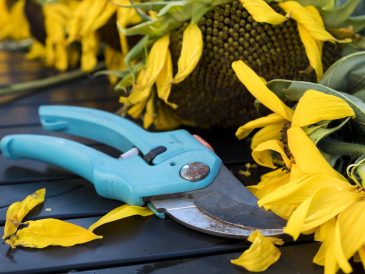That’s an excellent question.
Well, there is a wide range of flowering plants that can be grown in winter, all depending on your climate and on the county you live. So, here are some of the best flowers you can grow during the cold, freezing season.
Snowdrop
 Under the winter sunshine, delicate, milky white flowers with greenish inner petals glint and gleam, bringing an early and magical touch of spring hope.
Under the winter sunshine, delicate, milky white flowers with greenish inner petals glint and gleam, bringing an early and magical touch of spring hope.
Galanthus, most commonly known as snowdrops, are small flower bulbs that come from the amaryllis family and each flower bulb, which is shaped as a drooping bell with six petals, produces narrow linear leaves. The perennial plant can reach a maximum height of 3 to 6 inches. This perennial is known for being the first of the spring flowers to bloom during the cold winter season. In fact, these darling flowers are said to look best in gardens or at the front of borders, when the snow is still on the ground.
Because it is the first spring flower to bloom at the end of a freezing time, the snowdrop symbolizes hope, rebirth, and success after struggles and new beginnings. Due to its creamy white color, the flower also symbolizes purity, spirituality and innocence. Traditionally, the flower was linked with several myths and legends, one of which included the belief that this flower had a connection with Eve.
The best tip I can give you for growing snowdrops in winter is that you need to remember that these spring flowers truly dislike warm winters. And, if you want to know more about planting and caring for snowdrops, click here!
Winter Jasmine
 Jasminum nudiflorum, aka the winter jasmine, is one of the earliest flowering plants to bloom in winter. These deciduous perennials are native to China and are believed to belong to the olive family. But, unlike the jasmine which usually has a very deeply sweet scent, the winter jasmine is somehow known for its lack of scent. However, the plant is valued for its bright and beautiful yellow flowers that can remind anyone of spring sunshine and summer heat.
Jasminum nudiflorum, aka the winter jasmine, is one of the earliest flowering plants to bloom in winter. These deciduous perennials are native to China and are believed to belong to the olive family. But, unlike the jasmine which usually has a very deeply sweet scent, the winter jasmine is somehow known for its lack of scent. However, the plant is valued for its bright and beautiful yellow flowers that can remind anyone of spring sunshine and summer heat.
This blooming of this slender and fountain-like shrub peaks right after winter, which is why it is known as “the flower that welcomes spring” (named Yingchun in Chinese). The cheery flowers can appear on bare stems very early and the plant will shed its small, trifoliate leaves in autumn.
Despite the unscented blooms, the winter jasmine is often grown as an ornamental plant in the garden and is also said to be a beautiful and magical surprise in the cold season landscape. So, learn how to grow winter jasmine and perk up your cold season garden by clicking here!
Pansies
 This large-flowered hybrid plant earned its name from a French word, “pensee,” which means “to think.” Thus, the short-season perennials were linked with free-thinking and feelings of nostalgia and remembrance.
This large-flowered hybrid plant earned its name from a French word, “pensee,” which means “to think.” Thus, the short-season perennials were linked with free-thinking and feelings of nostalgia and remembrance.
As hybrids of viola plants, pansies short-lived perennials with overlapping and heart-shaped flowers that come in a wide variety of bright colors and patterns. And, even if they like full or partial sun, pansy flowers grow best in the winter seasons. So, if you grow pansies in your garden during winter, you’ll eventually end up with an enormous range of pink, purple, red, yellow and mauve flowers in your garden.
Just like the snowdrop, this tricolored beauty is also connected with several myths and legends. The most popular one is a German folklore that claimed that people from all around the world traveled to take in the amazing scent of the flower. However, they trampled the grasses where the flower grew, leaving no food for cows and cattle. It is then said that the plant prayed to God and ask him to help the animals. God then took away its fragrance in exchange for the flower’s wish.
So, if you are looking for a fun and adorable twist in your garden, click here to know how to grow pansies in winter.





